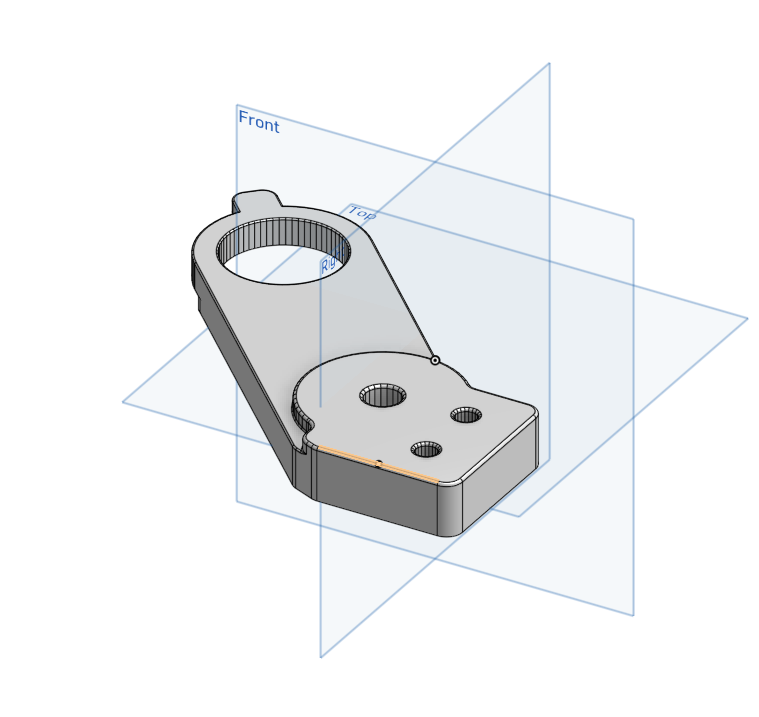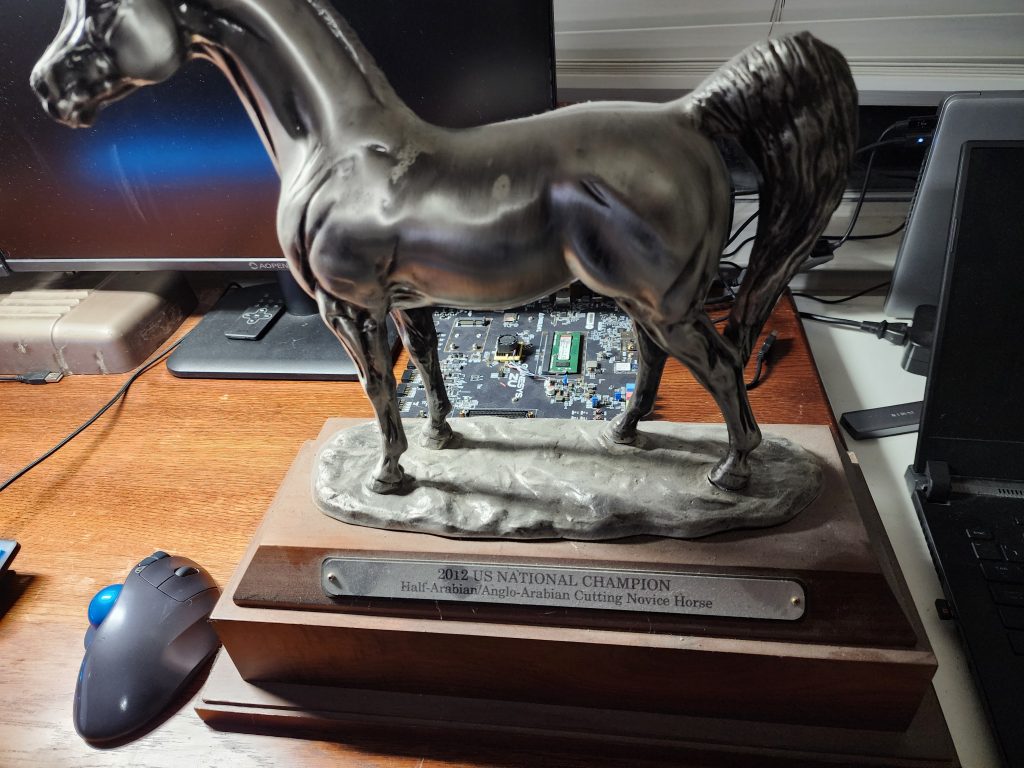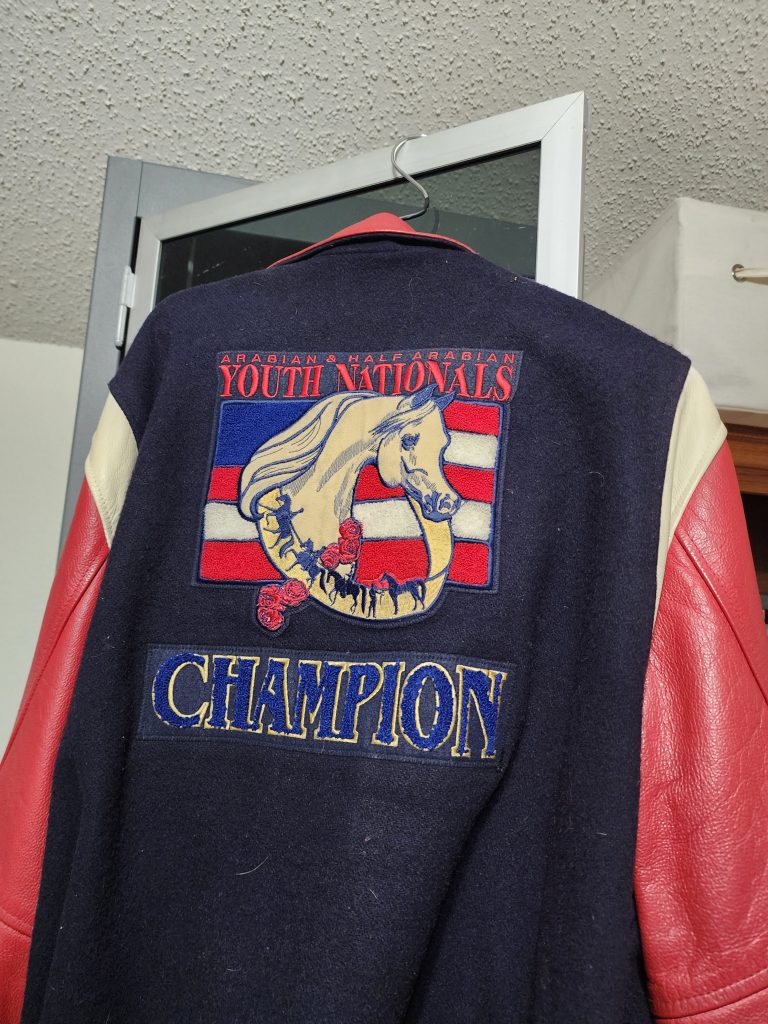It’s a bit unusual to see a, well, dissertation on the subject of the Constitution in a blog/website for a tech individual. One of the other things you may/may not know about me is that I’m a bit of a legal scholar and that I’m oftentimes intrigued by some of these sorts of distinctions and will study the actual meanings of some things at-length. This would be the case- and I did study extensively on this one. You shouldn’t take my, or anyone else’s word, for this one. You want to do your own research, pretty much like I did here and documented. In truth, you should be doing that anyway on most things. You only know when you go and do it yourself.
What precipitated this was numerous people in years past talking out of turn on the subject of the legal requirements of who can be President and when. It’s a bit off into the, “Too Long; Didn’t Read…” space, but unfortunately the explanation of these details are just that- and yet you need to read ANYHOW so you understand what you’re being told by others. Even myself. It’s being transcribed into my blog so I have it ready to point to people and to grab the citations becomeI make in it on a moment’s notice as it applies to a bit more than just the discussion that’s in here. If you disagree with the take here, you’re welcome to do so, but you’d best bring your, “A,” game to the table there- this is not just my own personal vapid hot-take. It’s been researched out against Supreme Court cases and the Congressional Globe- so you’re going to need that level that impeaches this all to win the day. With no further ado…on to the actual document…
In the process of the framing of the in-progress Constitution that we all know at least passingly of, Alexander Hamilton provided a draft of the document in question, June 18, 1787 to the Constitutional Convention. In addition, he also submitted to the framers a proposal for the qualification requirements in Article II as to the necessary Citizenship status for the office of President and Commander in Chief of the Military.
“No person shall be eligible to the office of President of the United States unless he be now a Citizen of one of the States, or hereafter be born a Citizen of the United States.”
This, actually is what most people believe it to be right now. Unfortunately, it’s not. We’ll get to what it is here in a moment as there’s a bit of history yet to be told as to how it got to the form that was actually ratified and sitting, un-Amended to date.
Many of the founders and framers expressed fear of foreign influence on the person who would in the future serve as President of the United States since this particular office was singularly and uniquely powerful under the proposed new Constitution. This question of foreign influence was elevated when John Jay considered the additional power granted to the Presidency during times of war, that is when he serves as Commander in Chief of the military. Jay felt strongly that whoever served as President and Commander In Chief during times of war must owe their sole allegiance to and only to the United States.
Because this fear of foreign influence on a future President and Commander in Chief was strongly felt, Jay took it upon himself to draft a letter to General George Washington, the presiding officer of the Constitutional Convention, recommending/hinting that the framers should strengthen the Citizenship requirements for the office of the President.
John Jay was an avid reader and proponent of natural law and particularly Vattel’s codification of natural law and the Law of Nations. In his letter to Washington he said that the Citizenship requirement for the office of the commander of our armies should contain a “strong check” against foreign influence and he recommended to Washington that the command of the military be open only to a “natural born Citizen”. Thus Jay did not agree that simply being a “born Citizen” was sufficient enough protection from foreign influence in the singular most powerful office in the new form of government. Rather, Jay wanted to make sure the President and Commander In Chief owed his allegiance solely to the United States of America. He wanted another adjective added to the eligibility clause, i.e., ‘natural’. And that word ‘natural’ goes to the Citizenship status of one’s parents via natural law.
The following is what Jay wrote in suggestion to Washington at the time:
“Permit me to hint, whether it would be wise and seasonable to provide a strong check to the admission of Foreigners into the administration of our national Government; and to declare expressly that the Command in Chief of the American army shall not be given to nor devolve on, any but a natural born Citizen.”
Upon receiving Jay’s letter, General Washington passed on the recommendation to the convention where it was adopted in the final draft. This was ratified in the Constitution as enacted, and has never been Amended- and reads as follows:
“No Person except a natural born Citizen, or a Citizen of the United States, at the time of the Adoption of this Constitution, shall be eligible to the Office of President; neither shall any person be eligible to that Office who shall not have attained to the Age of thirty five Years, and been fourteen Years a Resident within the United States.” – Article II, Section 1, Clause 5, U.S. Constitution as adopted 17 September 1787.
Radical departure from the original draft. It went from generalities to a rather convoluted and specific form there. Your first hint that it’s not what you believe it to be is in the “No Person except a natural born Citizen, or a Citizen of the United States, at the time of the Adoption of this Constitution, shall be eligible to the Office of President,” part of the clause. If they meant any naturalized citizen or birthright citizen, they’d have merely said “Citizen” like Hamilton had originally proposed. So, what does that mean? It was a common term of use. So common, that they didn’t believe that it needed explanation. There are three classes of Citizens in this Nation. Natural born, Birthright, and Naturalized. Only ONE of them, per the Constitution, is allowed to be President per the part of the clause. If they meant any naturalized citizen or birthright citizen, they’d have merely said “Citizen” like Hamilton had originally proposed. So, what does that mean? It was a common term of use. So common, that they didn’t believe that it needed explanation. There are three classes of Citizens in this Nation. Natural born, Birthright, and Naturalized. Only ONE of them, per the Constitution, is allowed to be President per the Un-amended Article II requirements as framed at the adoption of the Constitution proper. The reason? It was to limit foreign influences as much as was realistically possible. You had to have had skin in the game, being born as a Citizen OF Citizens in the country itself. You can’t get it with the other two.
Repeatedly, the Supreme Court refers to Vattel and his understanding, indicating that his is the at-common-law understanding used therein. Not once, but five differing times by the Supreme Court specifically over time, at least part of them specifically mentioning Vattel on the subject, and at least once indirectly, referring to the framer of the Fourteenth Amendment’s statements on the Congress Floor on the subject in question. I’ll get to the Supreme Court decisions and Congressman John Bingham’s statements here in a bit.
What did Vattel say on this subject?
“The citizens are the members of the civil society; bound to this society by certain duties, and subject to its authority, they equally participate in its advantages. The natives, or natural-born citizens, are those born in the country, of parents who are citizens. As the society cannot exist and perpetuate itself otherwise than by the children of the citizens, those children naturally follow the condition of their fathers, and succeed to all their rights. The society is supposed to desire this, in consequence of what it owes to its own preservation; and it is presumed, as matter of course, that each citizen, on entering into society, reserves to his children the right of becoming members of it. The country of the fathers is therefore that of the children; and these become true citizens merely by their tacit consent. We shall soon see whether, on their coming to the years of discretion, they may renounce their right, and what they owe to the society in which they were born. I say, that, in order to be of the country, it is necessary that a person be born of a father who is a citizen; for, if he is born there of a foreigner, it will be only the place of his birth, and not his country.” – Book 1, Chapter 19, Paragraph 212, “Citizens and Natives”, “The Law of Nations or the Principles of Natural Law”
Interesting, isn’t it? Basically, “natural born” as a term of use from Vattel’s statements there is one of “born of two citizen parents on a nation’s given sovereign soil”.
Now…is it a term of use, properly applied to Article II? Yes. The Supreme Court’s used it many times in the past. Someone telling you that they haven’t is either very misinformed or selling you something. Here’s the relevant parts for your review, along with proper citations so you can do the digging yourself:
“Vattel, who, though not very full to this point, is more explicit and more satisfactory on it than any other whose work has fallen into my hands, says: “The citizens are the members of the civil society; bound to this society by certain duties, and subject to its authority, they equally participate in its advantages. The natives or indigenes are those born in the country of parents who are citizens. Society not being able to subsist and to perpetuate itself but by the children of the citizens, those children naturally follow the condition of their fathers, and succeed to all their rights.” – The Venus, 12 U.S. 8 Cranch 253 253 (1814)
“Ann Scott was born in South Carolina before the American revolution, and her father adhered to the American cause and remained and was at his death a citizen of South Carolina. There is no dispute that his daughter Ann, at the time of the Revolution and afterwards, remained in South Carolina until December, 1782. Whether she was of age during this time does not appear. If she was, then her birth and residence might be deemed to constitute her by election a citizen of South Carolina. If she was not of age, then she might well be deemed under the circumstances of this case to hold the citizenship of her father, for children born in a country, continuing while under age in the family of the father, partake of his national character as a citizen of that country. Her citizenship, then, being prima facie established, and indeed this is admitted in the pleadings, has it ever been lost, or was it lost before the death of her father, so that the estate in question was, upon the descent cast, incapable of vesting in her? Upon the facts stated, it appears to us that it was not lost and that she was capable of taking it at the time of the descent cast.” – Shanks v. Dupont, 28 U.S. 3 Pet. 242 242 (1830)
“The citizens are the members of the civil society; bound to this society by certain duties, and subject to its authority, they equally participate in its advantages. The natives, or natural-born citizens, are those born in the country, of parents who are citizens. As society cannot perpetuate itself otherwise than by the children of the citizens, those children naturally follow the condition of their parents, and succeed to all their rights.’ Again: ‘I say, to be of the country, it is necessary to be born of a person who is a citizen; for if he be born there of a foreigner, it will be only the place of his birth, and not his country” – Dred Scott v. Sandford, 60 U.S. 393 (1856) () (This would be the “Dred Scott Decision”…)
“The Constitution does not in words say who shall be natural-born citizens. Resort must be had elsewhere to ascertain that. At common law, with the nomenclature of which the framers of the Constitution were familiar, it was never doubted that all children born in a country of parents who were its citizens became themselves, upon their birth, citizens also. These were natives or natural-born citizens, as distinguished from aliens or foreigners. Some authorities go further and include as citizens children born within the jurisdiction without reference to the citizenship of their parents. As to this class there have been doubts, but never as to the first.” – Minor v. Happersett , 88 U.S. 162 (1874)
“At common law, with the nomenclature of which the framers of the Constitution were familiar, it was never doubted that all children, born in a country of parents who were its citizens, became themselves, upon their birth, citizens also. These were natives, or natural-born citizens, as distinguished from aliens or foreigners.” – United States v. Wong Kim Ark, 169 U.S. 649 (1898)
So…they did discuss it. They did define it as how Vattel did. It’s worth noting that they have never wavered on this subject to date. Some might claim that the Fourteenth Amendment changed that or that Congress has the authority under the Constitution to define how someone becomes a Citizen.
Unfortunately, this is a term of use within the Constitution itself. Congress doesn’t get to modify that willy-nilly as they see fit. It is not one of the delegated powers given them under the Constitution. They can define how someone can become a Citizen for any forms they see fit, save one. Birth in the country to Citizen parents. That particular status is not subject to discussion or modification- and needs no forms filed to grant you Citizenship within this nation. Birthright (i.e. dual citizens, etc.) requires you to elect your Citizenship status at the time of your majority. Natural born does not. So, in essence, Congress can’t change this one without Amendment. Amendment, because we’re talking a legal document here, is additive, with the older law overriding the newer law where they conflict unless you specify that you’re modifying or repealing part or all of the older law with the new one.
The Fourteenth doesn’t specify such change of intent. And, more to the point, the framer didn’t view things any differently than the Supreme Court did.
It is worth noting that the indirect reference to the same that came out of the Supreme Court on this subject, from United States Supreme Court Associate Justice Hugo Black, in a concurring opinion in Duncan v. Louisiana, 391 U.S. 145 (1968), emphasized his reliance upon the statements made by Representative Bingham and Senator Howard in Congress which pertain to the drafting and adoption of the 14th Amendment. Justice Black stated that “it is far wiser to rely on” the words of Bingham and Howard when analyzing the 14th Amendment.“, 391 U.S. 145 (1968), emphasized his reliance upon the statements made by Representative Bingham and Senator Howard in Congress which pertain to the drafting and adoption of the 14th Amendment:
“Professor Fairman’s ‘history’ relies very heavily on what was not said in the state legislatures that passed on the Fourteenth Amendment. Instead of relying on this kind of negative pregnant, my legislative experience has convinced me that it is far wiser to rely on what was said, and, most importantly, said by the men who actually sponsored the Amendment in the Congress.I know from my years in the United States Senate that it is to men like Congressman Bingham, who steered the Amendment through the House, and Senator Howard, who introduced it in the Senate, that members of Congress look when they seek the real meaning of what is being offered. And they vote for or against a bill based on what the sponsors of that bill and those who oppose it tell them it means.” – Justice Hugo Black, Concurring Opinion, Duncan v. Louisiana, 391 U.S. 145 (1968)
So…what did Congressman Bingham have to say on this subject?
“As to the question of citizenship I am willing to resolve all doubts in favor of a citizen of the United States. That Dr. Houard is a natural-born citizen of the United States there is not room for the shadow of a doubt. He was born of naturalized parents within the jurisdiction of the United States, and by the express words of the Constitution, as amended to-day, he is declared to all the world to be a citizen of the United States by birth.” – The Congressional Globe, Volume 66, Part 4
“The Constitution leaves no room for doubt upon this subject. The words ‘natural-born citizen of the United States’ occur in it, and the other provision also occurs in it that, ‘Congress shall have power to pass a uniform system of naturalization.’ To naturalize a person is to admit them to citizenship. Who are natural-born citizens but those born within the Republic? Those born within the Republic, whether black or white are citizens by birth- natural-born citizens. There is no such word as white in your Constitution. Citizenship, therefore, does not depend upon complexion any more than it depends on the rights of election or office. All from other lands, who by the terms of your laws and a compliance with their provisions become naturalized, are adopted citizens of the United States; all other persons born within the Republic, of parents owing allegiance to no other sovereignty, are natural born citizens. Gentleman can find no exception to this statement touching natural-born citizens except what is said in the Constitution relating to Indians.” – (Cong. Globe, 37th, 2nd Sess., 1639 (1862))
Every human being born within the jurisdiction of the United States of parents not owing allegiance to any foreign sovereignty is, in the language of your Constitution itself, a natural born citizen…. – (Cong. Globe, 39th, 1st Sess., 1291 (1866))
These statements are very telling. The framer of the Fourteenth Amendment, in a statement on the floor, uncontested by Congress, stated that Vattel’s understanding was the one applying to the term of use there. It means that the operative law is that only a person born of two citizen parents, citizens at the time of their birth, born IN the US may be President.




